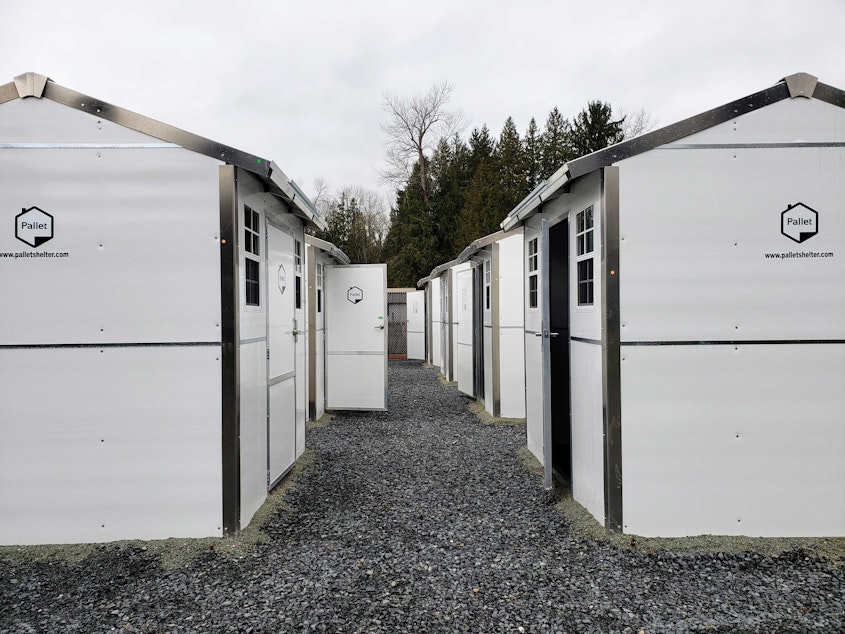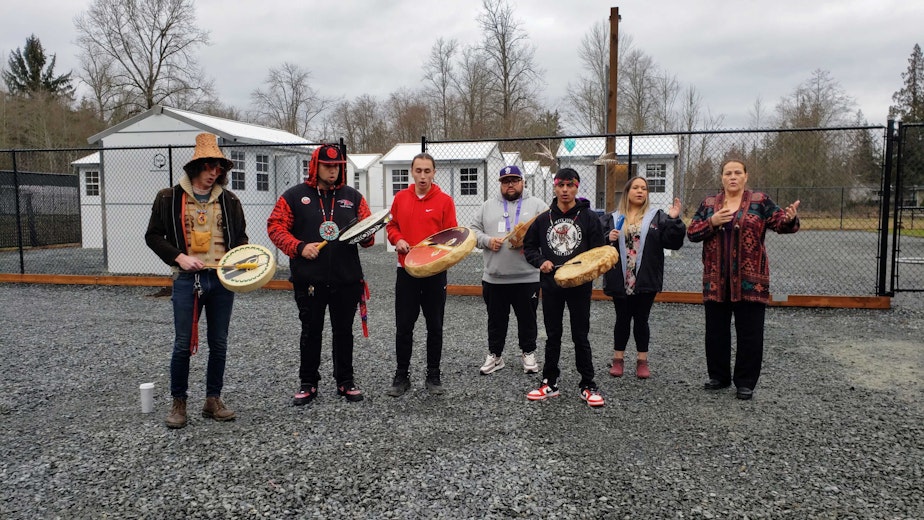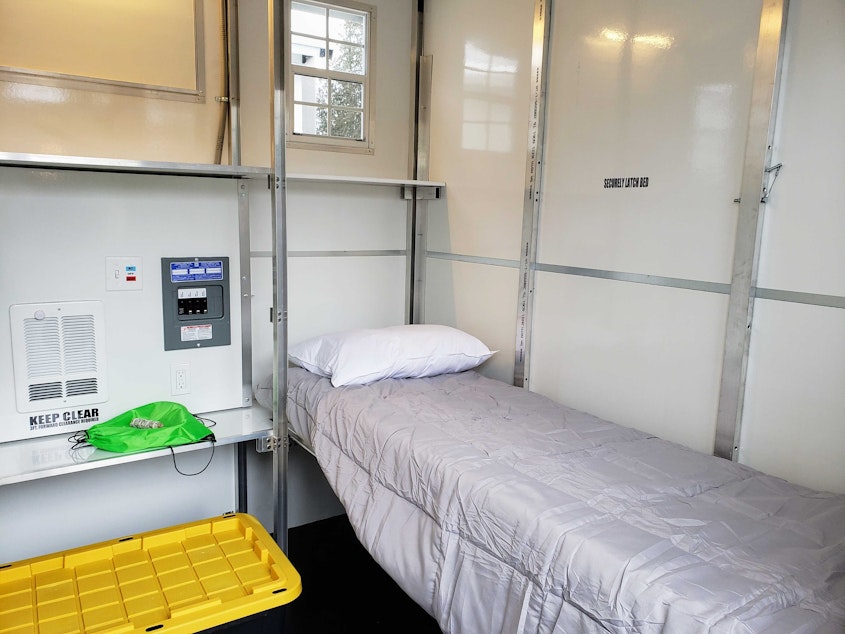Tulalip Tribes open first low-barrier shelter for homeless members

This week the Tulalip Tribes opened a new village of tiny homes for tribal members who do not have stable housing. The homes are meant to be temporary shelters and come with access to drug treatment services.
On Monday members of the Tulalip Tribes gathered in front of a cluster of small, white huts on the Tulalip Indian Reservation.
People burned sage as musicians and singers performed a blessing ceremony in front of the village.
These structures will soon be home to up to 30 Tulalip citizens who do not have stable shelter.
"This means the difference between life and death for our people,” said Tulalip Tribes Chairwoman Teri Gobin.
Gobin and other leaders got the idea for the shelters a couple of winters ago when overnight temperatures dropped to dangerously low levels. They started a hotel voucher program for people to get out of the cold.
Sponsored

“We established we had about 25 to 30 tribal members who didn't have safe places to sleep during that time,” said Rochelle Lubbers, chief administrative officer for tribal government, “and after we did that the second year, we realized we needed a more long-term sustainable solution to support our tribal members.”
Tulalip partnered with Pallet, a company based in nearby Everett, to supply the huts. Pallet builds different sized shelters for dozens of villages across the country.
“This one is especially meaningful because it’s in our backyard,” Pallet CEO Amy King said.
The Tulalip units are insulated and include a bed, window, heating unit, and lockable door. On Monday tribal members were adding toiletry kits and sage smudge sticks. Residents will share bathrooms and a kitchen space.
Sponsored
Most of the huts have room for one person but there are some doubles, too.
“We have couples who are experiencing homelessness and addiction together,” Lubbers said, “but we also have parents and children, so this will allow them to be together as they head on this journey.”

Indigenous people experience some of the highest disparities in homelessness rates compared to population size. The King County Regional Homelessness Authority found that though people who identify as Alaska Indian, Alaska Native, or Indigenous make up about 1% of the county’s population — 5% are in the county’s homeless response system.
Lubbers said most of their members experiencing homelessness are struggling with substance abuse and drug addiction.
Sponsored
“So, the tribe had to make a decision on how we were going to support this population and we couldn't come up with any other solution than to offer low-barrier housing,” she said.
Pallet rules say people at the village will not be required to be sober, but consuming alcohol and drugs on the property won't be allowed.
Tribal leaders stress that village residents will have access to wraparound support services like the Healing Lodge recovery program, medical-assisted treatment center, and job training.
“We have mental health, we have our own health clinic, and dental clinic, and we truly believe that the services we currently have will be able to provide the needs of this community,” Lubbers said.
Applications are now open for tribal members who want to stay at the shelter and Lubbers said people should start moving in in coming months.

